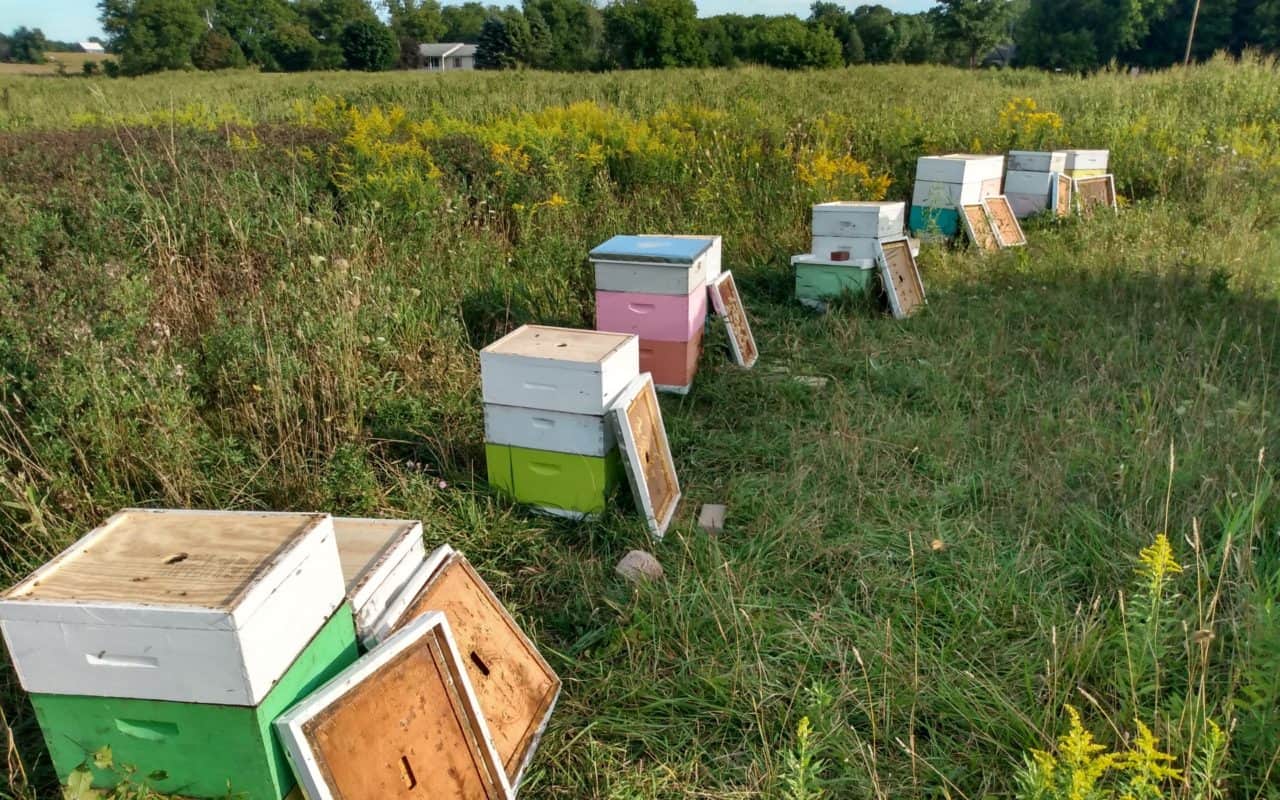Honey harvest is a point in the year that many beekeepers look forward to, as it is a chance to enjoy some of the tangible rewards of their (and their bees) hard work throughout the season. There are several methods of harvesting honey, but the common thread is they all involve separating the bees from the combs and supers containing the surplus honey to be taken. The most prevalent methods for large-scale operations are fume boards or leaf blowers, which allow many supers to be cleared of bees quickly. At a smaller scale, many beekeepers will remove bees from individual frames by shaking or brushing them off and placing them into another super to be taken away. A slightly more inventive option, which has proven to be a useful way to remove bees from supers, is the use of escape boards.
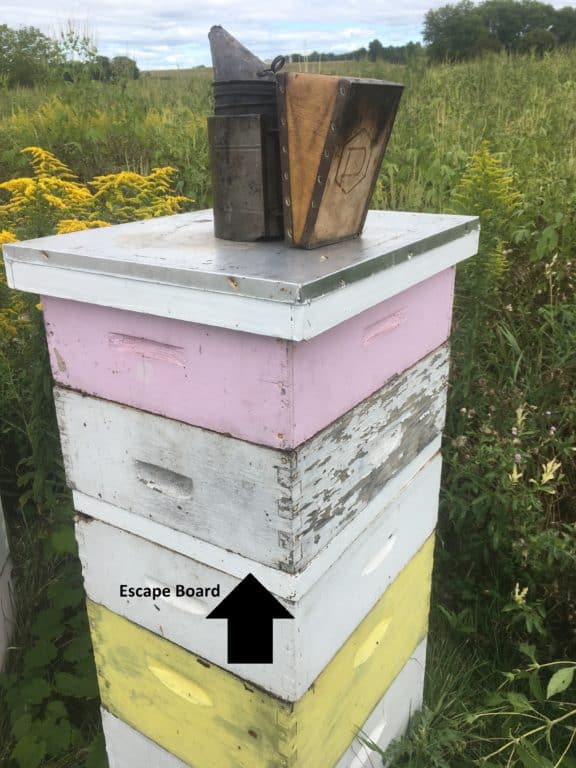
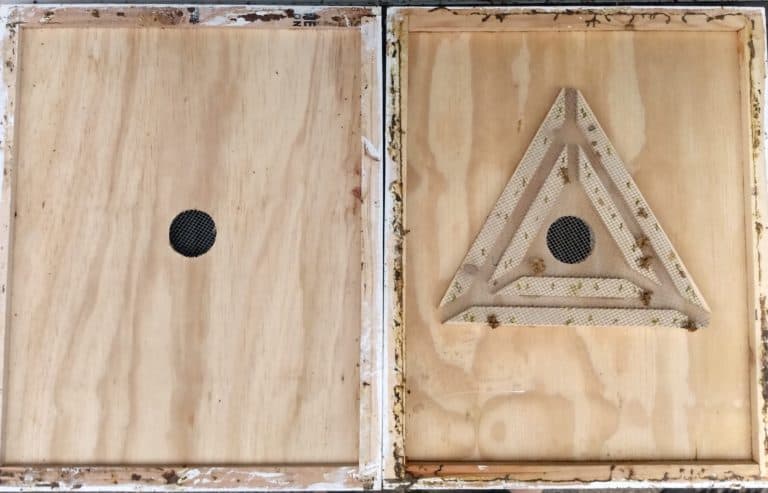
An escape board, also referred to as a bee escape, is a device that facilitates bees going through easily in one direction but not the other. This directional control is accomplished using a similar idea to a fish trap where the entrance is wide and easy to find but reduces down to a narrow exit. Once the bees pass through the exit side of the board, it is difficult for them to navigate the bee escape in reverse. When installed on the hive, the escape board permits easy passage in a downward direction but serves as a barrier to upward travel.
Several different styles of bee escapes exist with some using metal or plastic escape devices installed in a board while others have the escape mechanism built into the board using wood pieces and hardware cloth. By placing the escape board below the supers to be harvested and above the supers/brood boxes to be left behind, the bees will vacate the supers leaving them ready for harvest.
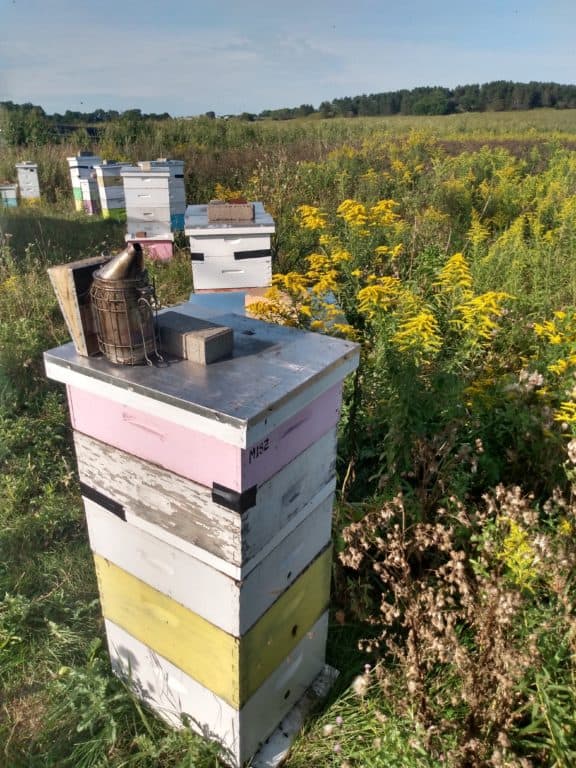
A period of 24 hours is often sufficient to clear supers, but some feel 48 hours is a more reliable duration. More time may be particularly useful when trying to clear many supers into a small brood nest (single), or during periods of poor weather when flight and colony activity is diminished. Honey should not be left on for more than a few days after the escape board is installed as small hive beetles or other pests may invade the undefended supers. It is also important that the supers above the escape board are bee tight to prevent robbing. This can be accomplished with tap or sponge to seal any gaps large enough to allow entry. It’s also important that the beekeeper remembers to close any upper entrances that are above the bee escape.
When returning to remove honey, it is easy to take the cleared supers without disturbing the colony below. In addition to the supers being (mostly) free of bees, any loose honey that was uncapped or opened at the previous visit to install escape boards will likely have been cleaned up by the bees leaving boxes with nothing to drip from top and bottom bars during handling and transit.
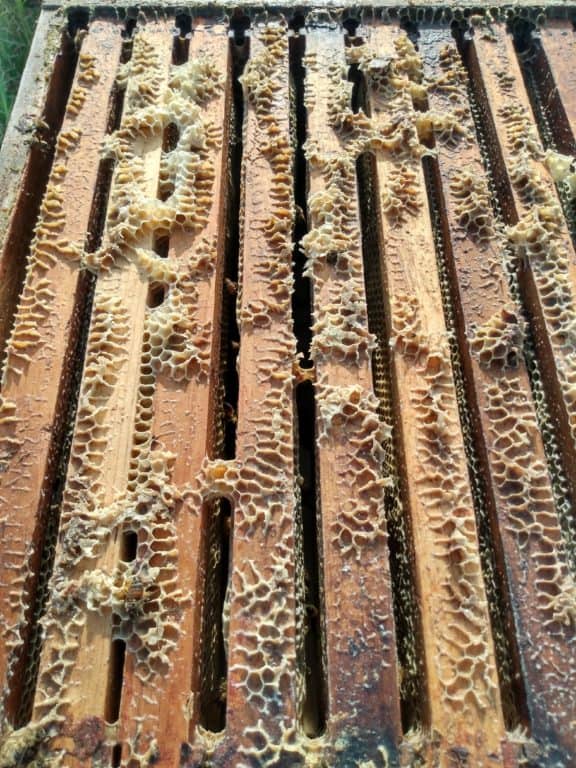
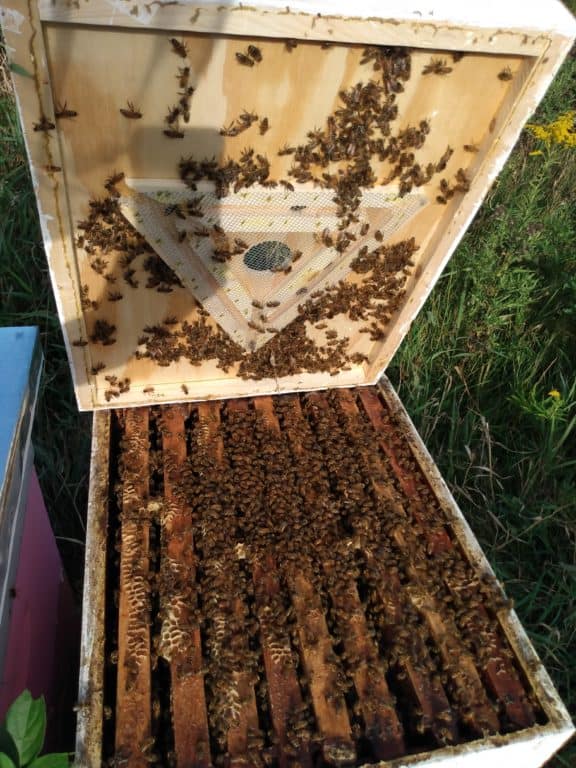
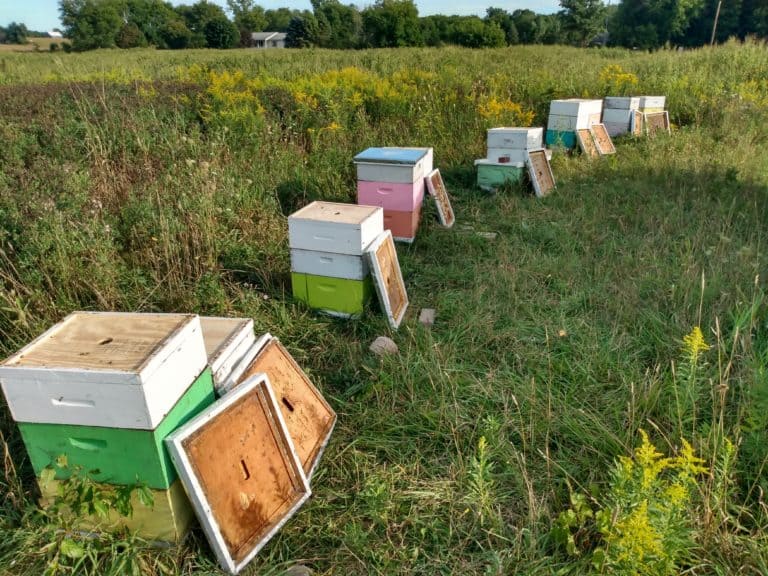
By not disturbing the colonies while the honey is being harvested, and eliminating nearly all dripping from supers, a very quiet collection of honey compared to other methods can be achieved. This also leads to less potential to incite robbing as there is no loose honey, and the colonies remain relatively undisturbed while supers are removed, covered, and secured for transit.
Escape boards may not be the best method to harvest honey in all cases, as they do involve two trips to the bee yard and extra lifting of supers to install boards on a hive. Nevertheless, they do provide a viable method for many beekeepers, especially those with apiaries located at or near home. It may take a little more time than other methods of harvest, but the benefit of a more pleasant harvest experience for the beekeeper and less disruption to the bees makes them my preferred method in most scenarios.
